
THE WIND RIVER RANGE in the Rocky Mountains stretches 100 miles across northwestern Wyoming and the Continental Divide, extending from the thick pine forests of Yellowstone National Park toward the vast grasslands of the Great Plains. From the river valleys and lakes below, the peaks of the mighty “Winds” rise toward the sky, reaching 13,000 feet above sea level. These granite towers pierce the clouds and are surrounded by highaltitude plateaus dotted with tundra and remnants of Ice Age glaciers. From a distance, they appear imposing, barren, and hostile, but closer inspection reveals a vibrant scene—herds of bighorn sheep traversing the horizon, marmots peeking up from boulder fields, and clusters of ancient whitebark pines standing watch over it all.
On the outskirts of a scraggly whitebark pine forest at 11,000 feet above sea level in the northern stretch of the range, a plume of smoke rises from a campfire as lunch is prepared in cast iron cookware over the open flames. Tents are spread out across the alpine meadow, and the whinnies of horses echo against nearby cliffs. It is a scene reminiscent of a nineteenth-century frontier camp, except for the presence of a bright yellow surveying instrument and the metallic ting of trowels as archaeologists scrape them against the pebbly soil. The site, known as High Rise Village, is perched on a hillside that would make a challenging black-diamond ski run. It was a large settlement occupied by the seminomadic Shoshone people from around 4,000 years ago until the nineteenth century. Discovered in 2006 by University of Wyoming archaeologist Richard Adams, High Rise Village was the first and largest of nearly two dozen high-elevation villages to be identified in the Wind River Mountains, and has provided new insight into how prehistoric people thrived in the high alpine zone of the Rocky Mountains.
This story is from the {{IssueName}} edition of {{MagazineName}}.
Start your 7-day Magzter GOLD free trial to access thousands of curated premium stories, and 9,000+ magazines and newspapers.
Already a subscriber ? Sign In
This story is from the {{IssueName}} edition of {{MagazineName}}.
Start your 7-day Magzter GOLD free trial to access thousands of curated premium stories, and 9,000+ magazines and newspapers.
Already a subscriber? Sign In
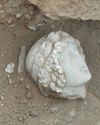
Digs & Discoveries - A Friend For Hercules - Archaeologists discovered a finely carved head depicting Apollo, god of the sun, music, and poetry.
While digging at the crossroads of the two main streets in the ancient city of Philippi in northern Greece, archaeologists discovered a finely carved head depicting Apollo, god of the sun, music, and poetry.
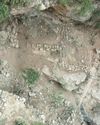
Digs & Discoveries - A Fortress Sanctuary - A sprawling 2,000-year-old fortress in the Zagros Mountains of Iraqi Kurdistan appears to have included a sanctuary dedicated to the ancient Persian water goddess Anahita.
A sprawling 2,000-year-old fortress in the Zagros Mountains of Iraqi Kurdistan appears to have included a sanctuary dedicated to the ancient Persian water goddess Anahita.
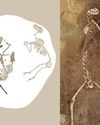
Like Cats And Dogs – Archeologist fund the skeleton of a male Eurasian lynx (Lynx lynx), a notoriously shy creature.
Оn the periphery of Zamárdi, an ancient lakeshore settlement in west-central Hungary, archaeologists uncovered a nearly five-foot-deep beehive-shaped pit with the skeletons of four adult dogs buried in successive shallow layers.
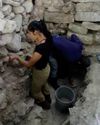
A Dynasty Born In Fire- How an upstart Maya king forged a new social order amid chaos
At the beginning of the Terminal Classic period (ca. A.D. 810-1000), many of the great kingdoms of the southern Maya lowlands-among them Tikal, Palenque, and Calakmul-were being abandoned or collapsing. For many years, scholars have assumed that most, if not all, the other kingdoms across the Maya world must have also been in steep decline.
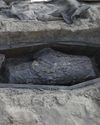
Medical Malfeasance - Archaeologists uncovered two coffins during excavations of a nineteenth-century cemetery in Quebec City that provide evidence of the illicit practice of diverting corpses for the study of human anatomy.
Archaeologists uncovered two coffins during excavations of a nineteenth-century cemetery in Quebec City that provide evidence of the illicit practice of diverting corpses for the study of human anatomy. Starting in 1847, medical students were required to have practical experience studying human anatomy, but legal options to procure cadavers were limited
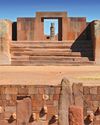
RISE AND FALL OF TIWANAKU
New dating techniques are unraveling the mystery of a sacred Andean city
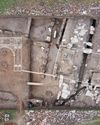
Making a Roman Emperor
A newly discovered monumental arch in Serbia reveals a family's rise to power in the late second century A.D.
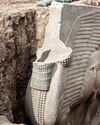
The Assyrian Renaissance
Archaeologists return to Nineveh in northern Iraq, one of the ancient world's grandest imperial capitals

Java's Megalithic Mountain
Across the Indonesian archipelago, people raised immense stones to honor their ancestors
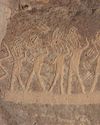
THE SONG IN THE STONE
Located in a desert gorge in southern Peru, Toro Muerto is one of the richest rock art sites in South America. It includes at least 2,600 boulders bearing petroglyphs, many featuring figures known as danzantes who appear to be dancing.